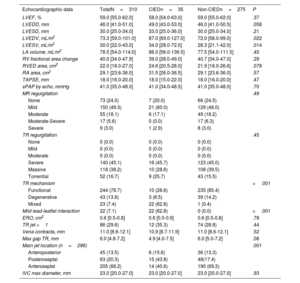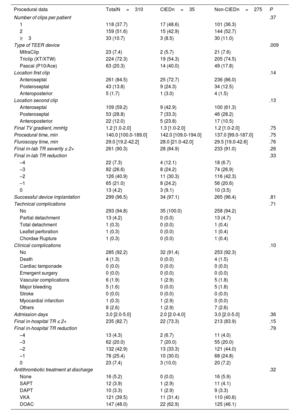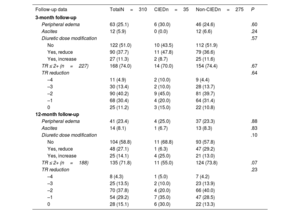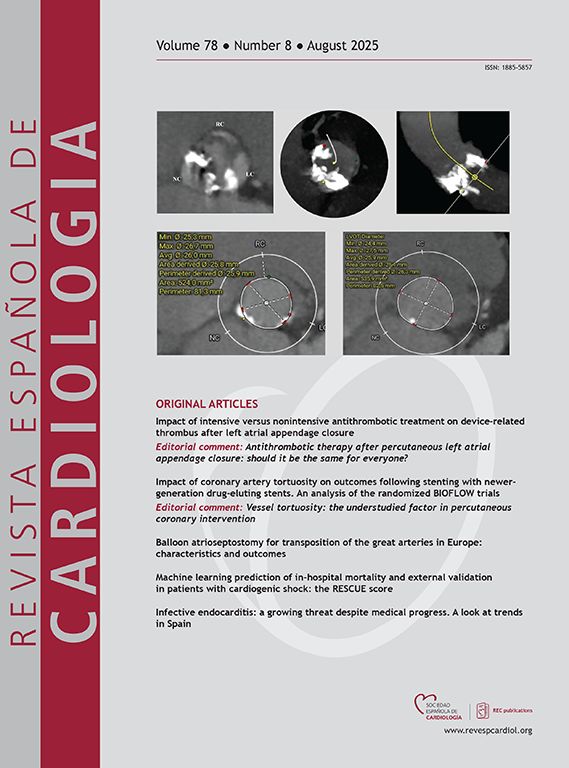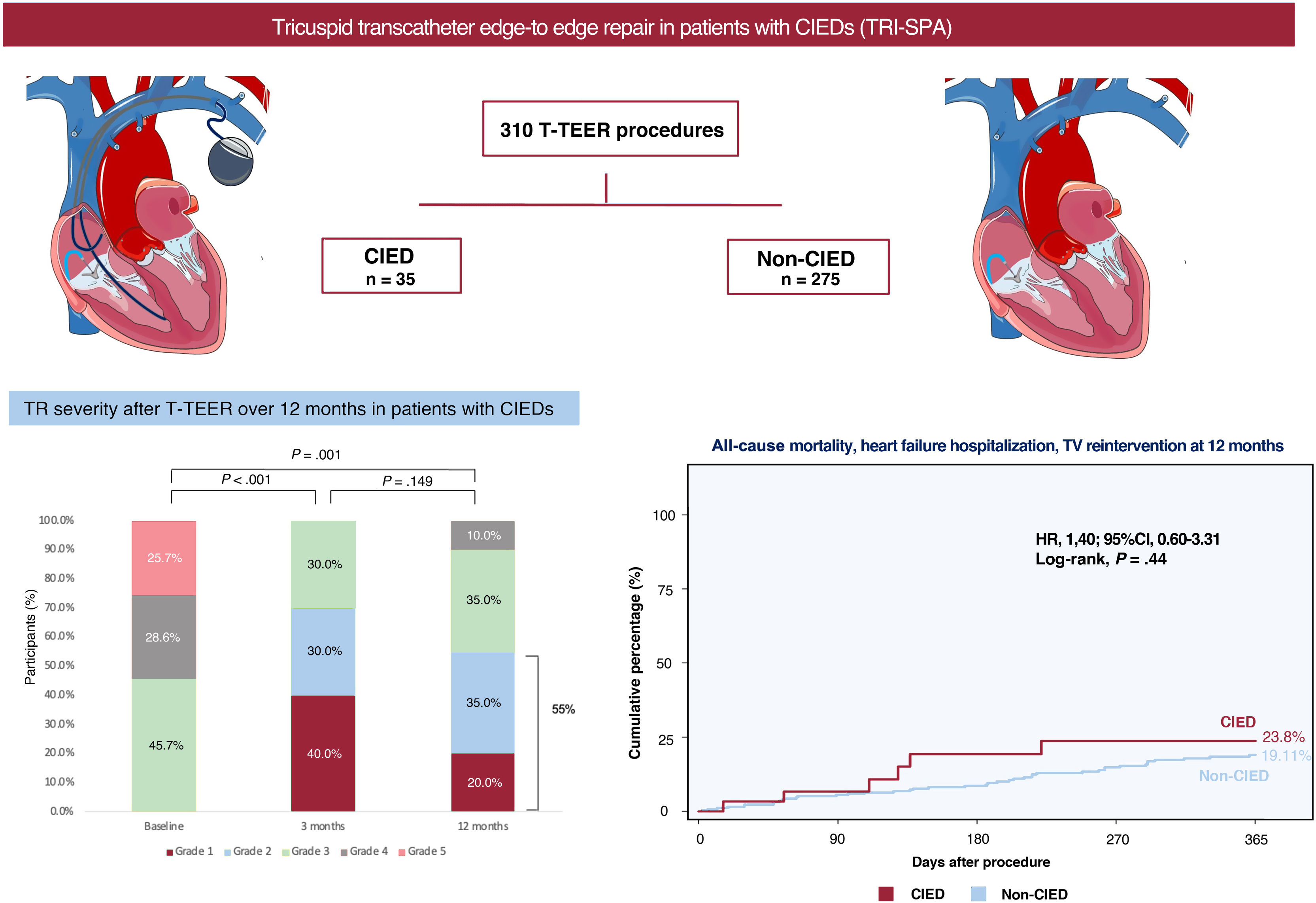
This study aimed to assess the effectiveness and clinical outcomes of tricuspid transcatheter edge-to-edge repair (T-TEER) in patients with cardiac implantable electronic devices (CIEDs).
MethodsThis subanalysis of the Transcatheter Tricuspid Valve Repair in Spain (TRI-SPA) registry included patients with at least severe tricuspid regurgitation (TR) who were treated with T-TEER between June 2020 and May 2023 in Spain. Patients with CIEDs and no or mild tricuspid lead-leaflet interaction were compared with those without CIEDs. The primary composite endpoint was all-cause mortality, heart failure-related hospitalization, and tricuspid valve reintervention at 12 months.
ResultsAmong 310 patients (mean age 75.5±9.1 years, 70% female) with significant TR treated with T-TEER, 35 (11%) had CIEDs. Device implantation success was high in both groups (97.1% in the CIED group vs 96.4% in the non-CIED group, P=.81), with a similar rate of ≤2+ residual TR (84.9% in the CIED group vs 91.0% in the non-CIED group, P=.26). Patients with CIEDs experienced comparable rates of the primary composite endpoint to the non-CIED group (23.8% vs 19.1%, respectively, HR, 1.40; 95%CI, 0.60-3.31; P=.44), sustained successful TR reduction (≤ 2+ in 55.0% vs 73.8%, P=.07), and functional improvement (NYHA class I/II 81.8% vs 79.9%, P=.79).
ConclusionsIn a real-world setting, T-TEER seems to be an effective therapeutic option for selected patients with more than moderate TR and CIEDs with no or mild lead-leaflet interaction, offering comparable cardiovascular outcomes and clinical improvement to those without leads. However, the presence of CIEDs may represent an independent risk factor for TR recurrence.
Keywords
Identify yourself
Not yet a subscriber to the journal?
Purchase access to the article
By purchasing the article, the PDF of the same can be downloaded
Price: 19,34 €
Phone for incidents
Monday to Friday from 9am to 6pm (GMT+1) except for the months of July and August, which will be from 9am to 3pm





